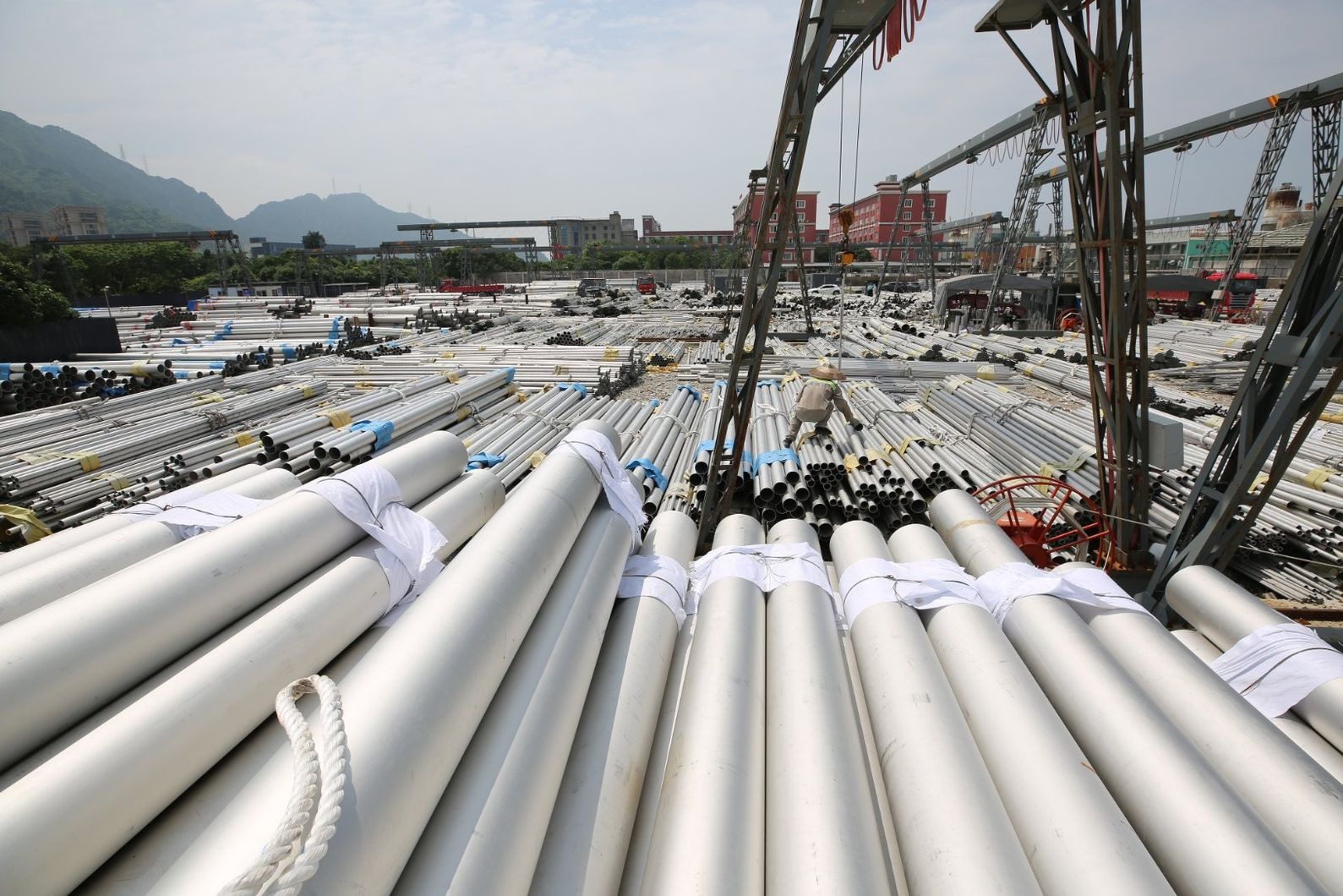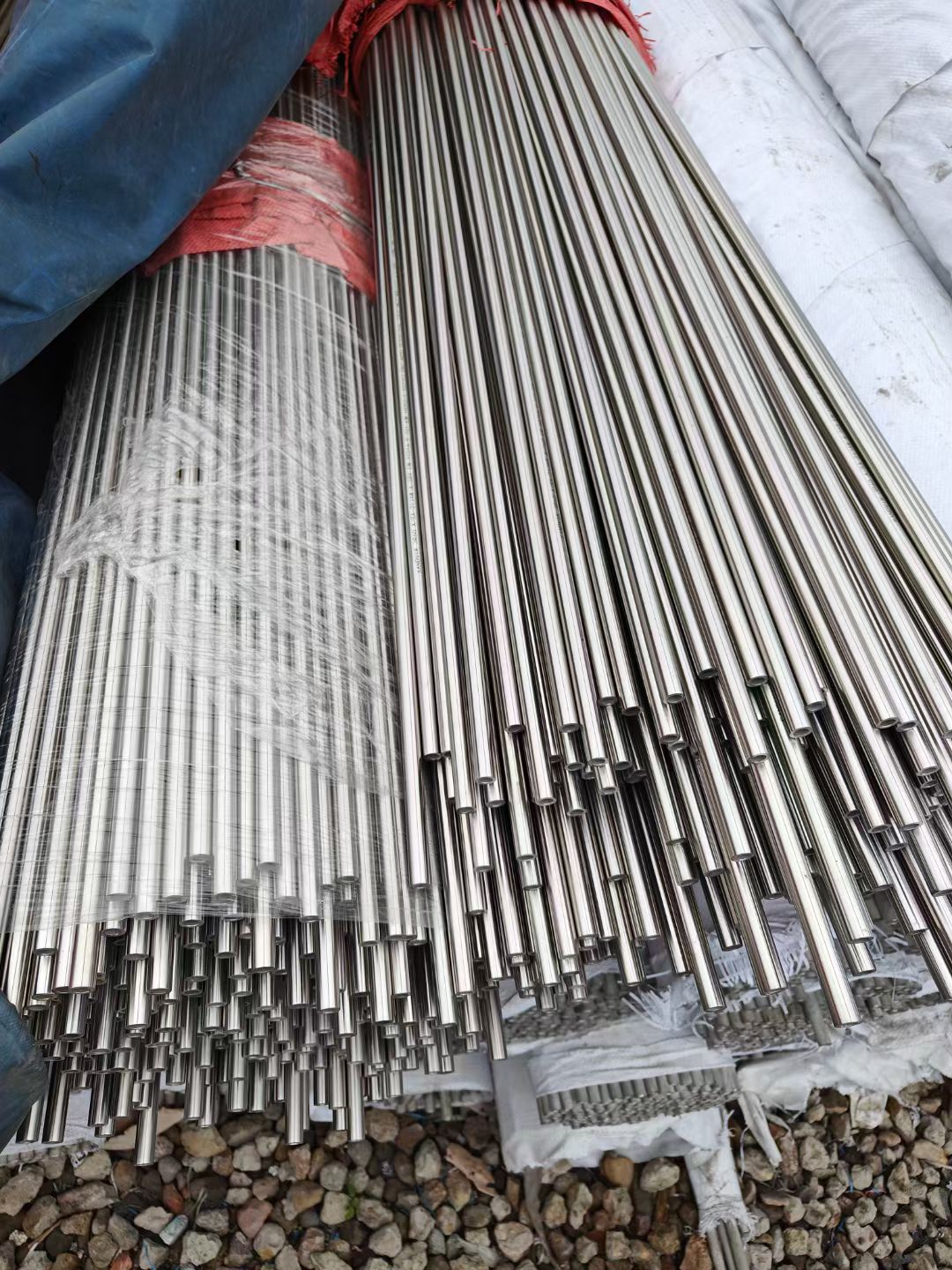close
Choose Your Site
Global
Social Media
Author: Site Editor Publish Time: 2025-08-06 Origin: Site








Super duplex stainless steel (SDSS) is a high-performance alloy celebrated for its unique combination of mechanical strength and corrosion resistance, derived from a balanced microstructure of austenite and ferrite. Unlike conventional stainless steels, which rely primarily on a single crystalline phase (e.g., austenitic or ferritic), super duplex steels maintain a roughly 50-50 mix of these two phases, a characteristic that underpins their exceptional performance.
To understand super duplex, it is critical to distinguish it from standard duplex stainless steel. While both are duplex alloys, super duplex variants contain significantly higher levels of key alloying elements—particularly chromium (24-26%), molybdenum (3-5%), and nitrogen (0.2-0.3%)—than their standard counterparts. This elevated alloy content pushes their Pitting Resistance Equivalent Number (PREN) above 40, far exceeding the 30-40 range of standard duplex steels. The PREN, a formula that quantifies resistance to pitting corrosion (PREN = %Cr + 3.3×%Mo + 16×%N), is a key metric here: a higher PREN indicates superior performance in chloride-rich environments like seawater or chemical processing plants.
The evolution of super duplex steel traces back to the mid-20th century, as industries sought alternatives to costly nickel-based alloys (e.g., Inconel) and conventional stainless steels that struggled in aggressive conditions. Early duplex steels, developed in the 1930s, offered improved strength over austenitic steels but lacked the corrosion resistance needed for extreme applications. By the 1970s, advancements in alloy design led to the first super duplex grades, tailored to withstand the harsh demands of offshore oil drilling, desalination, and chemical processing. Today, super duplex has become indispensable in sectors where reliability and longevity are non-negotiable, from subsea pipelines to industrial reactors.
The exceptional properties of super duplex stainless steel stem directly from its carefully engineered chemical composition, which balances multiple alloying elements to stabilize its dual-phase microstructure and enhance performance.
The microstructure of super duplex is a delicate equilibrium: roughly half austenite (face-centered cubic crystals) and half ferrite (body-centered cubic crystals). This balance is achieved through precise heat treatment (e.g., solution annealing) and controlled cooling, which prevents the formation of harmful phases like sigma or chi, which can cause brittleness and reduce corrosion resistance. Any deviation from this balance—whether due to improper heat treatment or alloying—can compromise the steel’s performance, highlighting the importance of strict manufacturing controls.

Super duplex stainless steel’s reputation as a high-performance material is built on three core attributes: exceptional corrosion resistance, superior mechanical strength, and a unique balance of toughness and durability.
Super duplex’s most defining feature is its ability to withstand aggressive environments that would degrade conventional steels. Its high PREN (>40) makes it highly resistant to pitting and crevice corrosion—two common failure modes in chloride-rich settings. For example, in seawater applications (e.g., offshore oil rigs or desalination plants), super duplex outperforms 316 stainless steel, which is prone to pitting in such conditions. It also resists stress corrosion cracking (SCC), a phenomenon where tensile stress and corrosive environments combine to cause sudden failure. This resistance is critical in industries like chemical processing, where equipment is exposed to both high pressures and corrosive chemicals (e.g., sulfuric acid, acetic acid).
Beyond chlorides, super duplex excels in environments with hydrogen sulfide (H₂S), a common contaminant in oil and gas operations that can cause hydrogen embrittlement in other alloys. Its passive oxide layer, reinforced by chromium and molybdenum, also provides resistance to general corrosion, ensuring long-term performance in both oxidizing and reducing environments.
Super duplex offers mechanical properties that bridge the gap between high-strength steels and corrosion-resistant alloys. It boasts a tensile strength of 650-800 MPa and a yield strength of 400-550 MPa—roughly twice that of austenitic steels like 304 or 316. This high strength allows for thinner-walled components in piping, pressure vessels, and structural parts, reducing weight and material costs while maintaining structural integrity.
Despite its strength, super duplex retains good ductility, with elongation values typically ranging from 25-30%. This combination of strength and ductility makes it suitable for applications requiring both load-bearing capacity and resistance to impact, such as subsea connectors or marine hardware.
While super duplex is not designed for extreme high-temperature applications (it begins to lose strength above 300°C), it performs reliably in the 0-250°C range, which covers most industrial operations. Its toughness is another standout feature: even at low temperatures (e.g., -40°C), it maintains sufficient ductility to avoid brittle fracture, a critical trait for Arctic or cryogenic applications.
While not as easily weldable as austenitic steels, super duplex can be welded with proper techniques. The key challenge is maintaining the austenite-ferrite balance during welding, as excessive heat input can promote the formation of brittle intermetallic phases. However, with controlled processes (e.g., TIG welding with low heat input) and matching filler metals, welded joints can retain the base material’s properties, ensuring consistent performance across the entire component.
In summary, super duplex stainless steel’s properties make it a versatile solution for industries demanding both strength and corrosion resistance. Its ability to thrive in harsh conditions, combined with its mechanical robustness, positions it as a cost-effective alternative to more expensive alloys, driving its adoption across oil and gas, marine, chemical, and power generation sectors.
Super duplex stainless steel encompasses several grades, each tailored to specific industrial needs through nuanced variations in alloy composition. These grades are standardized by systems such as UNS (Unified Numbering System), EN (European Norm), and ASTM, ensuring consistency in performance across manufacturers.
A comparison of these grades reveals trade-offs: 2507 excels in seawater, S32760 in chemical resistance, and 2594 in high-pressure applications. Manufacturers select grades based on specific corrosion risks, mechanical demands, and cost considerations.
Heat treatment is critical to unlocking the full potential of super duplex stainless steel, as it determines the balance of austenite and ferrite phases and eliminates harmful precipitates. The primary goal is to achieve a 50-50 mix of the two phases, ensuring optimal strength and corrosion resistance.
The effectiveness of heat treatment is verified through metallographic analysis, where microscopes check for phase balance, and corrosion testing (e.g., salt spray tests) confirms resistance. Properly treated super duplex retains its properties even after decades of use, making heat treatment a cornerstone of its reliability.
Super duplex stainless steel’s unique blend of strength and corrosion resistance has made it indispensable across industries where equipment operates in aggressive environments. Its ability to replace more expensive alloys (e.g., Hastelloy) while outperforming conventional stainless steels drives its widespread adoption.
Renewable Energy: Offshore wind turbine foundations and subsea cables use super duplex to endure harsh marine conditions, ensuring the longevity of wind farms in coastal areas.
Understanding the differences between super duplex, standard duplex, and austenitic stainless steels is critical for selecting the right material for specific applications. These distinctions lie in alloy composition, performance metrics, and cost, each tailored to distinct industrial needs.
Super duplex stainless steel’s unique microstructure and alloy content make welding and fabrication more complex than for conventional steels. However, with proper techniques, these challenges can be managed to preserve the material’s properties.
Machining Considerations:
Super duplex’s high strength and work-hardening tendency make machining more demanding than for austenitic steels. Carbide tools with sharp cutting edges are recommended, along with slower cutting speeds and higher feeds to minimize heat buildup. Coolants (preferably water-based) help prevent overheating and maintain surface finish.

Super duplex stainless steel’s unique properties make it a top choice for harsh environments, but it is not without trade-offs.
Superior Corrosion Resistance: Its high PREN (>40) and resistance to SCC, pitting, and crevice corrosion make it ideal for seawater, chemicals, and sour gas applications.
High Strength-to-Weight Ratio: With tensile strength twice that of austenitic steels, it allows for thinner, lighter components, reducing material and transportation costs.
Longevity: In aggressive environments, super duplex can last 20+ years with minimal maintenance, outperforming carbon steel (5-10 years) and even standard duplex (10-15 years).
Cost Efficiency vs. High-Alloy Alternatives: It offers similar performance to nickel-based alloys at a fraction of the cost, making it suitable for large-scale projects.
Higher Initial Cost: Super duplex is 20-50% more expensive than standard duplex or austenitic steels, which can be a barrier for low-stress, non-corrosive applications.
Fabrication Challenges: Welding and machining require specialized skills and equipment to avoid microstructure damage, increasing labor costs.
Temperature Restrictions: It loses strength above 300°C and is unsuitable for high-temperature applications (e.g., furnace components) where austenitic or nickel alloys perform better.
Sensitivity to Heat Treatment: Improper annealing or cooling can lead to precipitate formation, reducing corrosion resistance and toughness.
The demand for super duplex continues to grow, driven by innovations in alloy design and expanding industrial applications.
Next-Generation Alloys: Manufacturers are developing grades with reduced nickel content (to lower costs) while maintaining corrosion resistance. For example, Alleima’s "next-gen" super duplex uses optimized nitrogen and molybdenum ratios to offset lower nickel, targeting cost-sensitive sectors like renewable energy.
Enhanced Weldability: New formulations aim to reduce sensitivity to heat input during welding, simplifying fabrication. Additives like niobium and titanium are being tested to stabilize the microstructure in HAZs.
Sustainability: Recycling processes for super duplex are improving, with companies like Outokumpu developing closed-loop systems to recover chromium, molybdenum, and nickel, reducing reliance on virgin ores.
Expanding Applications: Super duplex is entering renewable energy (offshore wind turbine foundations), carbon capture (CO₂ transport pipelines), and aerospace (seawater-resistant components for coastal launch sites), driven by its durability and sustainability.
Super duplex stainless steel stands as a testament to materials engineering, balancing strength, corrosion resistance, and cost-effectiveness for the world’s most demanding industries. From offshore oil rigs to desalination plants, its ability to thrive in harsh environments has redefined reliability standards, reducing downtime and lifecycle costs.
As industries push into more extreme conditions—deeper oceans, higher temperatures, and more aggressive chemicals—super duplex will continue to evolve, with next-gen alloys and improved fabrication methods expanding its potential. For engineers and procurement teams, understanding its properties, grades, and limitations is key to unlocking its full value: a material that doesn’t just meet challenges but anticipates them.